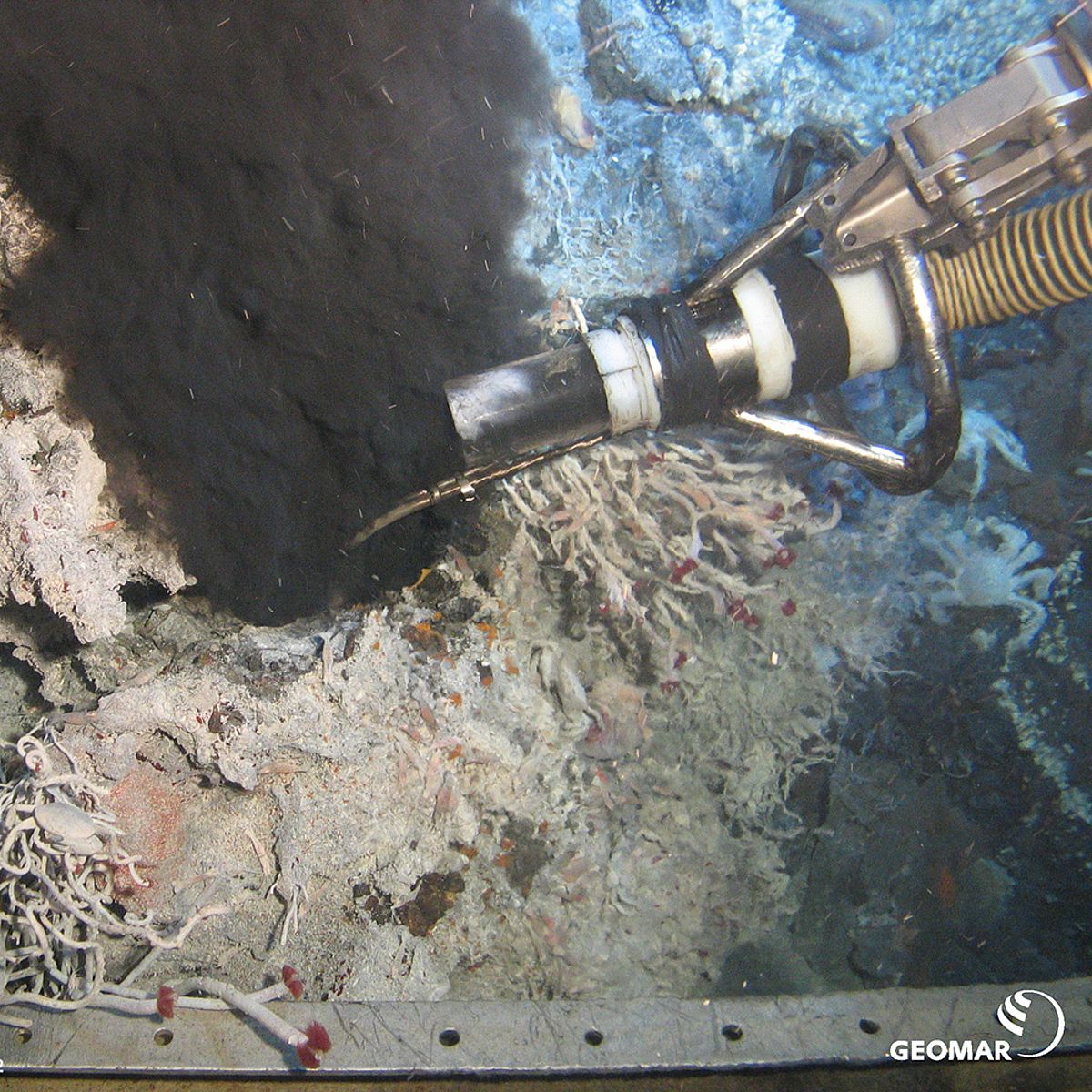Numerous methods are now available to get samples from the bottom of the sea. A simple chain bag third has been used for decades, but has the disadvantage that no targeted sampling is possible. More precisely, there are already Vulkanite shock pipe and TV-guided grippers. The best, but also most expensive method is sampling by means of a diving boat, such as "Jago" or diving robots, the so-called Remotely Operated Vehicles (ROV). GEOMAR has two of these ROVs, the ROV "Phoca" for operations up to 3000 m water depth and the ROV "Kiel 6000" for operations up to 6000 m water depth.
Fluid sampling can be achieved via ROVs. Multiple samplers such as the isobaric gas tight sampler (IGT; (Seewald, et al. 2002), the titanium syringe sampler (Majors sampler; (Von Damm, et al. 1985), and the Kiel pumping system sampler (KIPS; (Garbe-Schönberg 2006) are commonly in use to collect trace metal samples at a depth of up to 4000 m, and can be easily attached to a ROVs manipulator arm (Fig. 4.7). These samplers are made of titanium or other inert materials, are acid and temperature resistant to withstand the hot and acidic conditions of hydrothermal working areas, are fully remotely controlled, and are filled through a titanium nozzle or snorkel which can be directly inserted into the vent orifice or other localised trace metal sources.
If it is to go deeper into the seabed, only drilling helps. In sediments, this is initially still possible with heavy solders, but in solid rocks this is only possible with holes that can be done either via mobile platforms directly at the bottom of the sea (e.g. RockDrill 2 / MeBo) or from floating platforms (e.g. ship) can be carried out. Due to the enormous costs, the latter is carried out almost exclusively through the International Ocean Discovery Program (IODP).





